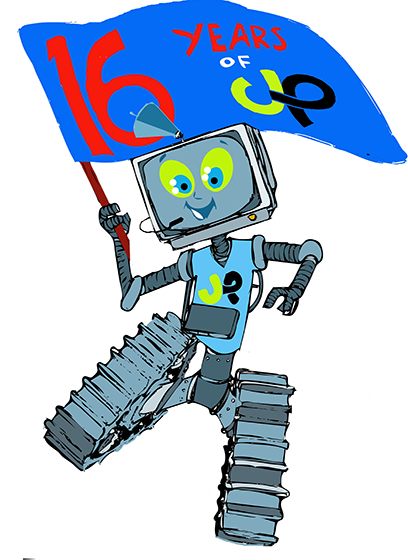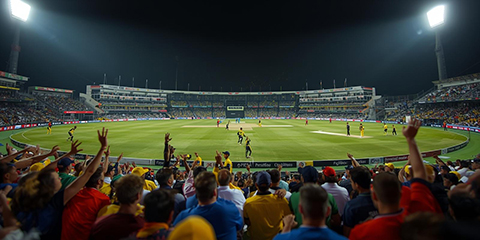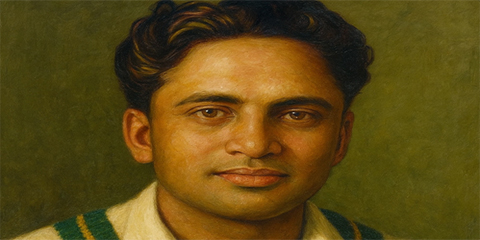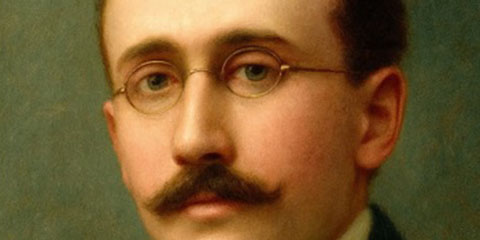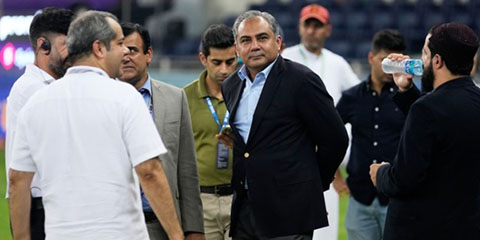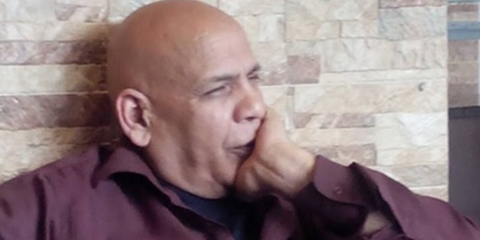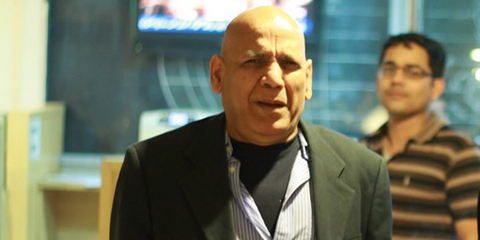My protégé Nauman Niaz: From wordy first draft to Pakistan cricket's greatest voice
JournalismPakistan.com | Published 2 months ago | Imran Naeem Ahmad
Join our WhatsApp channel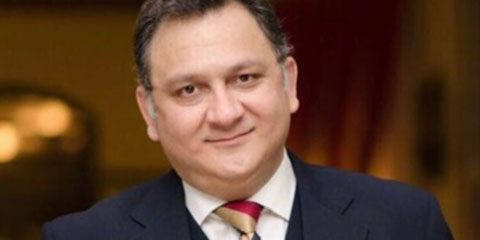
ISLAMABAD —Pakistan had emerged triumphant in the Benson & Hedges World Cup of 1992, and preparations were underway for the upcoming tour of England that summer. At The News International, Dr. Maleeha Lodhi, then Resident Editor, entrusted me with a young medical student who was keen on cricket writing. He came with an introduction from Maqsood Ahmad (Merry Max), our Sports Editor, though I was at the helm of operations, and he was handed over to me for guidance.
His first submission crossed my desk with a promise that was clear yet hidden beneath too many words — rare, difficult, and mostly unnecessary. The writing was clumsy and heavy with pretension. I was not impressed. I cut it down, stripped away the excess, and had it printed. This became the start of my mentorship of this enthusiastic boy and his apprenticeship as a sub-editor under me.
Nauman Niaz, sporty in manner, lively in character, a chain-smoker with a quick smile, came from a family of high military standing. His father was then a serving Lieutenant General, powerful and respected. Yet Nauman showed no arrogance, no trace of a sheltered childhood. He shared our teacups, our cigarettes, our jokes. He laughed easily, moved freely among us, and by his personality as much as his words, he belonged. His presence broke down barriers of class or upbringing; he became one of us.
As his mentor, I began to see a talent not given to all. A remarkable memory, precise and sharp, and an analytical mind beyond his years. Together we covered domestic matches, taking turns to pay for fuel and cigarettes, and we became friends.
The Early Days of Mentorship: Building Nauman’s Foundation
Still a medical student, not yet formally a doctor, Nauman would arrive at the desk earlier than any of us, coming straight from Rawalpindi Medical College, our very neighbor. I admired his discipline. He balanced medicine and journalism while never letting me down in his editorial duties. He stayed late, filing reports, editing copy, keeping watch with the dedication of one born for the trade. With Rizwan Ehsan Ali, lovingly 'Joji', we became, in our own eyes, a comic trio, three colleagues fumbling cheerfully through the smoke and urgency of the newsroom. But within that trio, I was also Nauman’s teacher, correcting his drafts, shaping his style, and sharpening his instincts.
From the nearby defense correspondent's room, Shakil Shaikh's colorful language floated in, balanced by Production Editor Salim Bokhari's strong presence, Shahina Shaikh's race against time at the City Desk, and Talat Hussain's serious discussions on the Editorial Desk. It was a lively group, noisy, irreverent, and yet completely committed to the craft.
In time, Talat recognized Nauman's promise and invited him as an expert during the UAE-Pakistan match in the Wills World Cup 1996 for his program Swarey Sawrey on Pakistan Television. That moment marked a turning point. From there, Nauman's rise was unstoppable. With a photographic memory and natural presence before camera and page alike, he became, quickly and naturally, a figure of national regard, and soon after, of international recognition. He did not simply join the conversation of cricket; he came to shape it.
Watching My Protégé Grow into a Cricket Voice
What followed was continuous growth. Each piece of writing showed improvement, refinement, and strengthening. As his mentor and editor, I saw him shed pretension and develop a sharper, more authentic voice with every draft. In my opinion, he has since reached a place where, if not the finest, he is unquestionably among the most productive of our writers on the game.
It gave me immense satisfaction to watch his progression, from the clumsy sentences I once trimmed down to a crisp, authoritative style that could stand proudly in print. Nauman had begun to master clarity, accuracy, and impact, the hallmarks of good journalism that I had always impressed upon him.
Where others in the newsroom would falter or fade, he persisted. His enthusiasm was infectious, and I often reminded him that persistence mattered more than brilliance in journalism. He took that lesson to heart.
By the mid-1990s, he had become not just another young sports reporter but a voice the readers noticed and respected. As his mentor, I felt a sense of pride each time I saw his byline grow in stature because I knew the long nights and patient corrections behind it.
Mentor’s Insight: The Man Behind the Voice
Nauman's presence reflects his life's scope and diversity, working as a clinician (clinical endocrinologist) and also a broadcaster, having headed one of Pakistan's top specialized 24/7 sports channels. I often reminded him during our newsroom days that true strength lies in versatility, and I have watched him live out that lesson across medicine, media, and management.
On television, he became a familiar face, anchoring cricket shows that gained loyal audiences. His grasp of history, statistics, and analysis, sharpened during those early editing sessions with me, now flowed naturally on screen. I always recognized his extraordinary memory and depth of knowledge, qualities that became the backbone of his broadcasting career.
He could recall entire scorecards from decades past, dissect obscure matches, and contextualize the game with insight few others could match. When I first saw these flashes in his drafts, I urged him to rely less on flourish and more on fact, advice that later gave him his trademark style: precise, informed, and authoritative.
Beyond broadcasting, he carried the same drive into administration, curating Pakistan's cricket history, writing prolifically, and building institutions. To me, this was the natural evolution of a young man I had once guided through his very first match report, a student who absorbed lessons quickly and then multiplied them through sheer energy.
Yet what struck me most was his resilience. Even when disillusioned or criticized, he bounced back with energy and spirit, ready to prove himself again. That resilience, I believe, was born partly from those formative years when I insisted he rewrite, re-edit, and refine, never to settle for less than his best.
Guiding Through Pakistan Cricket’s Challenges
Pakistan cricket has long been held hostage by rule from above, entrenched in centralized, bureaucratic structures with fragmented capacity at every level. The PCB has never been truly independent. I often discussed these flaws with Nauman in his early years, and I saw how deeply he grasped the core issues: self-service, nepotism, and mediocrity consistently winning over merit and honesty.
Dr. Nauman went on to spend three decades in broadcasting, most of them as a host, anchor, and in-house expert. It gave me great pride to watch his evolution from a nervous sub-editor to a commanding television presence. I regularly followed the shows he anchored on PTV Sports, and his fluency, seamless delivery, and deep, coherent knowledge always left me amazed.
I had once taught him to strip away clutter and aim for clarity, and now I saw those same lessons come alive on screen. To me, he is arguably one of the finest sports hosts in contemporary television, perhaps the very best Pakistan has produced. His memory is mind-boggling, and it became one of his greatest assets. Naturally, this mastery earned him recognition: in 2014, he was appointed Director at the Pakistan Television Corporation (PTVC), where he headed PTV Sports, the nation’s first 24/7 specialized sports channel.
A Protégé Beyond Cricket: Medical Expertise and Health Advocacy
Nauman was never confined to cricket alone. Even during his early newsroom days, I sensed his restless intellect and drive to explore beyond sports. Over the years, he wrote extensively about Pakistan’s fragile medical infrastructure, the poor state of facilities, the uneven level of competence, the lack of work ethic, and the repeated failures of successive governments to provide free health services to the people.
At the peak of his dual career, both as a clinician and a broadcaster, tragedy struck. He was diagnosed with Non-Hodgkin’s Lymphoma. As his mentor and friend, I watched with both pain and admiration as he fought one of life’s toughest battles. He endured a sequence of failed chemotherapy regimens, a bone marrow transplant, and even a CART (genetically engineered stem cell) transplant.
And yet, Nauman never allowed illness to strip him of dignity or presence. Modestly dressed but always distinctive, he would walk with a stick firmly in his right hand, yet remain immaculate in a Canali suit, a Valentino tie, a perfectly folded pocket square, Gucci shoes, and colognes that announced his arrival. That meticulousness, the refusal to give in, even in adversity, was something I had recognized in him as a young man, and it only deepened in later years.
Nauman is obsessive, yes, but in the way achievers often are. To me, he remains a man who thrives under pressure, who refuses surrender, who believes not in excuses but in execution in getting things done, no matter the odds.
The World's Greatest Cricket Collection
Nauman is widely recognized as the largest collector of cricket memorabilia globally. From the earliest days I mentored him, I could see his fascination with the game extended far beyond writing or broadcasting; it was almost an obsession. His collection is regarded as ‘serious’ even by the most discerning vendors in the United Kingdom, including John McKenzie, Michael Down, Martin Chandler, and Magnus Bowles.
He also houses a remarkable library of over 7,000 first editions spanning philosophy, war history, literature, thrillers, adventure, and satire. I remember advising him in our newsroom conversations that his love for books and knowledge would one day become as legendary as his cricket reporting, and it has. His cricket books are masterpieces, with treasures such as Wisdens, James Lillywhite Annuals, Britcher, all three editions of Felix on the Bat, and hand-signed volumes by Fred Lillywhite, C.B. Fry, Shri Kumar Ranjitsinhji, W.G. Grace, Sir Pelham Warner, Ashley Cooper, John Arlott, Robertson-Glasgow, and Neville Cardus.
His evenings are mostly spent in his library, a study he meticulously established in his home. Contrary to his public persona, he is a loner. I have often remarked that even in those formative years under my mentorship, Nauman’s devotion to reading and learning was extraordinary, a young man absorbing Balzac and Thackeray by age 12, and by 15 exploring the works of Jean-Paul Sartre, Bertrand Russell, George Bernard Shaw, and Winston Churchill. This relentless pursuit of knowledge laid the foundation for the depth, precision, and analytical brilliance that define his work today.
Mentoring a Young Mind: Educational Background and Early Struggles
Nauman was different from his peers, endowed with a photographic memory and a sharp intellect that made him excel academically. Even in those early years, I noticed his quest for identity; a young man navigating expectations, privilege, and personal ambition. By the time he reached high school, he faced criticism and even sarcasm for being the only son of a powerful general officer of the Pakistan Army. When he began medical school, his father was a serving Lieutenant General, and the army ruled the country, adding yet another layer of challenge. He was often isolated, perceived as “blue-blooded,” not fully part of the ordinary student milieu.
Despite these hurdles, Nauman distinguished himself as an accomplished sportsman. I recall encouraging him to balance his studies, sporting pursuits, and early interest in writing, a challenge he embraced fully, his forceful personality complemented by intelligence and an extraordinary memory.
It is therefore no surprise that today he stands as an established writer and a respected broadcaster. Having mentored him through those formative years, I can say with certainty that his resilience, discipline, and hunger for knowledge were apparent even then. His medical journey and career trajectory are remarkable; that he continues to live, work, and inspire is nothing short of awe-inspiring.
Through Adversity: The Cancer Battle
Nauman’s medical journey has been extraordinary, marked by several surgeries and health challenges. Yet being diagnosed with Non-Hodgkin’s Lymphoma left him visibly shaken. I witnessed a side of him few had ever seen, a man tested to his limits, yet refusing to collapse. For a brief period, we all feared he might succumb to despair. An ordinary person might have given up, but Nauman had to endure one therapy after another. Even in the face of failed treatments, his energy and resolve never waned. He fell, yes, but always rose again, seeking hope amidst hopelessness.
He underwent autogenic stem cell and allogeneic bone marrow transplants, procedures that subsequently caused myelodysplastic changes, making his condition extraordinarily complex. Oncologists were increasingly despondent, some giving up hope. Throughout, I observed his mental preparedness, a quiet, steadfast readiness to face any outcome. Despite exhaustion, he remained extraordinarily positive, sustained by deep faith.
After being told that nothing more could be done and that his disease had not responded to treatment, Nauman returned to Pakistan to be with his family. I remember seeing traces of hesitation and slight despair, yet no regret. Even at the height of his career, when it seemed the world had pushed him back, he remained undeterred at his core.
In the months that followed, the disease appeared relentless, and I felt the weight of sorrow and disappointment alongside him. I prayed in a state of discouragement, even envying the calm with which he bore it all. Meeting his father at that time, a truly remarkable man, only reinforced my admiration for Nauman’s resilience and the strength of the family that had shaped him.
Witnessing a Protégé's Triumph: The Miraculous Recovery
Nauman flew to the United States, and I followed every development with concern and hope. I learned he had been offered an experimental treatment, a rare chance for survival. Even while prostrated, weakened, and coping with relentless pain, he found a glimmer of hope, a resilience I had seen in him from his earliest days in the newsroom. He was offered CAR T (Genetically Engineered Stem Cell Transplant), a high-risk procedure with potential complications, even death. Without hesitation, he agreed to undergo it. The treatment, estimated at nearly one million US dollars, required significant resources.
His father mobilized the funds, and Nauman underwent CAR T. During the procedure, severe complications arose: blood clots formed, and he went into cardiac arrest. He was successfully resuscitated, and stents were placed in major arteries to save his life. Even at death’s door, he was not ready to give up. I had seen his courage under pressure in the newsroom; now it manifested most profoundly. He underwent multiple additional procedures and received high doses of immune radiotherapy.
His endurance and capacity to tolerate excruciating pain were nothing short of extraordinary. Later, secondary cancer emerged after CAR T, leaving him at a critical crossroads. Yet, just as he had risen from the challenges of early mentorship and professional trials, he fought back once more and fully recovered.
Global Broadcasting Heights
Nauman went on to host shows for some of the world’s leading sports channels—ESPN, Ten Sports, Star India, BBC, TV NZ, Zee TV, ITV, and Granada Television, to name a few. I can attest that his expertise in cricket and his natural presence on camera made him a standout colleague and a genuine authority in the field.
In 2015, PTVC invested heavily to acquire the ICC World Cup rights. With Ten Sports also broadcasting the tournament, the PTV sales team was understandably skeptical. It was here that Nauman’s vision and strategic insight shone. Drawing on discipline and ingenuity, he devised a plan to attract sponsors to PTV Sports, despite competing against channels with higher ratings, wider distribution, and larger consumer bases.
He convinced the management that top ex-foreign cricket stars could be brought to Pakistan as in-house guests for PTV Sports’ flagship show. He made the impossible seem feasible, a testament to the leadership and confidence he had cultivated over the years under guidance and hands-on experience.
PTVC’s ICC World Cup 2015 transmission became an instant success, achieving unprecedented ratings and generating a net revenue of Rs 1.39 billion, the highest in Pakistan's broadcasting history. For me, witnessing Nauman reach such professional heights was deeply rewarding; it was the culmination of years of mentorship, shared challenges, and a relentless pursuit of excellence.
Bringing the Game Home
With top ex-foreign players visiting Pakistan, a significant milestone was reached. When the Pakistan Cricket Board requested Zimbabwe to tour our country, Alistair Campbell, Managing Director of the ZCU, cited the visits of Jonty Rhodes, Herschelle Gibbs, and Damien Martyn as a case study to his government. This paved the way for the first tour by a full ICC member in May 2015. I had the privilege of witnessing Nauman’s pivotal role in this process firsthand, as Alistair himself confirmed it during appearances on PTV Sports, where Nauman was the in-house expert.
As a result, Game On Hai became both a brand and a household name. Hosted by Nauman, featuring top ex-Pakistan players alongside prominent foreign stars, the show quickly became the most-followed cricket program in Pakistan. It was remarkable to see how he transformed into not just a broadcaster but a national ambassador for cricket’s return, bridging players, fans, and international relations with vision and finesse.
The Complete Professional Profile
In the history of Pakistan’s cricketing narrative, there exists no middle ground when it comes to Dr Nauman Niaz. Having mentored him from his earliest days as a young, eager cricket writer, I have witnessed firsthand the evolution of a man whose intellect, elegance, and unapologetic conviction make him sometimes loved, often controversial, but never ignored. Born in Lahore in November 1969 and trained as an endocrinologist (MBBS, MRCP, fellowships across London, Edinburgh, Ireland, Glasgow, a PhD from Western Australia, and a post-doctoral stint at Oxford), Nauman seamlessly bridges the worlds of medicine and media with rare skill.
When he launched PTV Sports, he breathed life into what had grown stale on state radio and television. Under his leadership, Game On Hai became more than a talk show; it became an institution. Legends like Vivian Richards, David Gower, Ian Chappell, Brian Lara, Glenn McGrath, Andrew Symonds, Sir Curtly Ambrose, Ajay Jadeja, Sanath Jayasuriya, and many others appeared from Islamabad. He built a foreign cast and co-hosts of international reputation, and in doing so, he played a pivotal role in paving the way for cricket’s gradual return to Pakistan, a journey I had the privilege to witness and support
Literary Achievements and Collections
As a writer, Dr Nauman avoided the flattery of headline grabs. Having guided him during his early cricket writing days, I saw how his prose matured, literary without being indulgent, passionate without spectacle, and always precise. He authored 15 books, 13 of them on cricket. The monumental four-volume Fluctuating Fortunes (over 4,700 pages) became the canonical history of Pakistan cricket. Later came Collector's Eye, Volumes I & II, cataloguing his world-record 8,500-book cricket collection, rare bats, signed photographs, and more.
This is who Nauman Niaz is: broadcaster, cricket historian, medical doctor, collector, cultural leader, and a warrior of both life and legacy. From the newsroom to watching him command the airwaves, I can attest that he is larger than life because he embraces it fully. Praise him or criticize him, there are no neutrals. But hear him, and you hear a voice raised in defense of cricket’s dignity, Pakistan’s potential, and the enduring power of words crafted with mastery, a journey I was fortunate to guide in its earliest chapters.
Honors and Recognition
Dr. Nauman belongs to that select company of men whose careers straddle disciplines with rare learning. His life has been distinguished not only by scholarship and service, but also by recognition at the highest level: in 2014, he was conferred the Tamgha-i-Imtiaz, one of Pakistan’s notable civil honors, awarded in acknowledgment of his contributions to the public sphere.
Yet his intellectual reach has never been confined to the clinic or hospitals. From guiding his analytical approach in cricket writing to observing his clinical work, I saw how his special interests seamlessly merged medicine, physiology, and sport, reflecting both scientific rigor and a lifelong connection to cricket and athletic endeavor. His published papers stand as testimony; each subject shows a desire not only to diagnose but to illuminate the ethical, physiological, and rehabilitative dimensions of sport, binding together the science of the body with the conscience of the game.
Professional Certifications and Training
Dr Nauman’s expertise is strengthened by a host of certifications in both sport and medicine. In the sporting domain, he was awarded the Certificate of Excellence for the successful completion, with distinction, of the Unit Through Sports (USPORT) Training Program jointly conducted by the University of Indiana, Purdue University, and the University of Notre Dame in 2004. To this, he added the Harvey & Leech Professional Speaker Certification obtained in Istanbul in 2010.
In medicine, his record is no less comprehensive. He undertook Developing Clinical Excellence in Diabetes programs in Lisbon (September 2011) and Dubai (December 2011), and secured certification in New Aspects in Global Risk Management and the Treatment of Hypertension in Paris (March 2007). He further completed training in Clinical Experience with Insulin Detemir in Patients with Type 2 Diabetes in the Near East countries, and a Certificate of Completion for Attendees Practicing Outside the United States in San Diego (June 2011). To this must be added his certification on Debating the Key Clinical Questions for the Management of Patients with Chronic Hepatitis C Infection, undertaken in San Francisco in November 2008.
Through all of this, I observed Nauman integrate knowledge across disciplines, from clinical medicine to cricket analytics, demonstrating that his pursuit was never merely about credentials, but about using expertise in the service of science, sport, and society.
PTV Sports Leadership: Building a Broadcasting Empire
In the story of modern Pakistani broadcasting, PTV Sports stands as a testament to Dr. Nauman Niaz’s vision, perseverance, and leadership. From the channel’s inception to its ascent as the country’s premier sports broadcaster, his stewardship demonstrated not only administrative competence but also a rare combination of strategic foresight, creative instinct, and commercial acumen.
Launched on January 12, 2012, PTV Sports began under his guidance as Head of Content and Senior Anchorperson. By 2013-14, he had assumed the dual responsibility of Head of Content and Operations, and from 2014 until 2016, he presided as Director of Sports and Channel Head. This tenure was later extended from 2016 until May 2022, during which he also held parallel leadership roles as Director of Training Academy, Head of PTV Global, General Manager of PTV Sports, General Manager of PTV Global, and General Manager of the PTV Training Academy.
As Channel Head, Nauman’s oversight spanned the full spectrum of broadcasting craft and commerce. He supervised the acquisition of live international and domestic content, analyzed market trends, interpreted consumer demand, and charted the channel’s future through meticulous ratings and competitor analysis. He designed and executed creative campaigns, promos, and station identifications, scripted fillers and on-air segments, and monitored their execution with unwavering attention to detail. Under his leadership, PTV Sports not only grew in reach but also in credibility, professionalism, and influence, redefining sports broadcasting in Pakistan.
Financial Success and Market Leadership
By 2022, under Dr. Nauman’s strategic direction, PTV Sports had firmly established itself as Pakistan’s number one specialized sports channel, boasting the most comprehensive content inventory in its history. Among the crown jewels were the ICC Rights (2020-2023), exclusive PCB Rights (2020-2023), Asia Cup Rights (2014-2023), Cricket South Africa Rights (2021-2023), and the English Premier League Rights (2021-22). Beyond cricket, the channel also acquired rights to the Grand Slam Tennis tournaments — Wimbledon, French Open, Australian Open, and US Open, along with World Snooker (2020-21) and AEW Wrestling, creating a portfolio both diverse and dominant in the Pakistani sports broadcasting landscape. Watching him operate, it was clear that this was not just about rights or numbers, but about crafting a broadcasting experience that resonated with every viewer.
The channel’s financial trajectory reflected this dominance. In its inaugural year of 2012, revenues were Rs 544 million, rising sharply to Rs 1.69 billion in 2012-13, dipping to Rs 716 million in 2013-14, recovering to Rs 1.55 billion in 2014-15, and climbing again to Rs 1.79 billion in 2015-16. Even during leaner years — Rs 1.0 billion in 2016-17, Rs 920 million in 2017-18, and Rs 900 million in 2018-19 — the channel maintained a competitive edge, returning to Rs 1.6 billion in 2019-20. Despite a pandemic-related dip to Rs 487 million in 2020-21, revenues soared to a record Rs 2.6 billion in the first nine months of 2021-22, closing the year at Rs 2.9 billion.
This remarkable growth came at the expense of long-standing rivals. Ten Sports, traditionally earning between Rs 900 million and Rs 1 billion, and Geo Super, with revenues of Rs 300–350 million, were decisively overtaken. By contrast, PTV Sports consistently commanded Rs 1.2–1.6 billion annually, culminating in 2021-22 with levels previously unimaginable in Pakistan’s broadcasting history. Dr. Nauman’s leadership and strategic vision had transformed PTV Sports into both a market leader and a financial powerhouse.
Tournament-Specific Achievements: Turning Cricket into Gold
Dr. Nauman’s tenure at PTV Sports was defined not just by overall success but by tournament-specific milestones that spoke volumes about his vision and execution. Under his leadership, the Asia Cup 2012 generated Rs 300 million, the ICC World T20 of the same year brought in Rs 712 million, and the bilateral India-Pakistan series of 2012 earned Rs 450 million. The ICC World Cup 2015 set a record with revenues of Rs 1.39 billion. Subsequent highlights included Rs 920 million from the Asia Cup and ICC World T20 of 2016, Rs 700 million from the ICC Champions Trophy 2017, Rs 300 million from the Asia Cup 2018, Rs 1.4 billion from the ICC World Cup 2019, Rs 1.3 billion from the ICC World T20 2022, and Rs 1.1 billion from PSL 7 of 2022. These consistently impressive numbers reflected PTV Sports’ dominance, commanding between 60–66% of the cricket event revenue market in Pakistan.
Beyond the sheer numbers, Nauman’s commercial acumen shone through breakthrough deals. Most notable was the partnership with GroupM, the world’s largest multinational media company, structured as a Public-Private Partnership. The result? A stunning Rs 2.9 billion boost in PTVC’s annual revenues, with Rs 1.8 billion attributed to PTV Sports and Rs 1.1 billion spread across the wider PTVC network. It was a deal that cemented his reputation as a shrewd negotiator, capable of blending state responsibility with market intelligence.
Progress wasn’t confined to financial metrics alone. Under his guidance, PTV Sports transitioned from standard definition to high definition, a technical leap completed without dipping into PTVC funds, cleverly offset against commercial airtime through the GroupM arrangement.
For anyone who witnessed it firsthand, the transformation was astonishing. PTV Sports under Dr Nauman became more than a channel — it became a national institution, a hub of cricketing insight, and a testament to the possibilities when intellect meets passion. His mastery of the game’s intricacies, combined with unmatched commercial foresight, left a channel not just enriched financially but ennobled culturally, reclaiming its primacy in Pakistan’s sports broadcasting landscape.
Journalistic Career and Global Reach: Chronicling Cricket Across Continents
From his earliest contributions to The Muslim in 1988-89, one could see that he was not content with mere reporting. Even then, his writing carried a scholarly depth and clarity. For anyone who worked with him, Nauman had this rare ability to combine knowledge with curiosity.
Between 1991 and 1997, watching him contribute to The Cricketer Pakistan, I often marveled at his consistency and insight. His pieces weren’t just reports; they were lessons in storytelling, context, and the culture of cricket. When he joined The News International in 1992, he balanced editorial responsibilities with correspondence duties, covering 26 international and domestic series. I remember him telling me once, half-smiling, “It’s not about being there; it’s about seeing what others can’t see.” That philosophy shaped every article he wrote, and it rubbed off on anyone who worked alongside him.
His reach was truly global. Articles in Dawn, The Nation, Saudi Gazette, Khaleej Times, The Hindu, Hindustan Times, Sydney Herald, and DNA (India), and in cricket journals like Wisden Monthly and Cricketer International were all written with the same meticulous care and passion. I often noticed how he could translate complex cricket strategies and biomechanics into prose that was readable, engaging, and authoritative.
But what impressed me most was how he always used his platform to educate others. I’ve spent hours in his company discussing the finer points of the game, the ethics of reporting, and the responsibility of a cricket historian. He didn’t just write to be read; he wrote to guide, inspire, and elevate the next generation of journalists.
For anyone who knows him, this is the defining mark of Dr Nauman Niaz: a scholar, a journalist, and above all, a mentor who leads by example. His career is a lesson not just in cricket, but in dedication, integrity, and the quiet power of teaching through action.
Published Works and Literary Legacy: Lessons Through the Written Word
Working alongside Dr. Nauman, one quickly realizes that his journalistic and literary output is inseparable from his mentorship. His books are not just publications; they are manuals in scholarship, precision, and passion. I remember the day he showed me the first copy of Fluctuating Fortunes in 2005, a four-volume magnum opus spanning 4,764 pages, later formally launched by the prime minister. To him, this wasn’t just cricket history; it was a lesson in discipline, patience, and archival integrity.
In the years that followed, he wrote Pakistan Cricket: Story of Betrayal (2010), Myth & Reality: Story of Type 2 Diabetes (2011), and The Frazzled Face: Failures of Pakistan Cricket (2011). Each book, I noticed, carried his signature approach: incisive, fearless, and deeply informed, blending expertise with narrative flair. Later works like Collector's Eye, Changing Trends: The Global Dynamics of Type II Diabetes (2014), and Burden Escalation (2015) expanded his range from cricket to medicine, reflecting a man who never stopped learning or teaching. More recently, Collector's Eye Volumes I & II (2021), Second Innings (2021), and Cricket's Witness (2022) reaffirmed his dual mastery of storytelling and scholarship.
I often tell younger journalists that watching Nauman write is a masterclass. He approaches every subject, whether the subtleties of cricket tactics, the intricacies of medical research, or reflections on life itself, with the same meticulous eye, the same refusal to compromise. To read him is to learn not only the facts, but how to think, how to question, and how to present with integrity.
Global Impact and Athletic Background: A Life of Action and Adventure
Nauman’s influence has never been confined to the page. He has been to conferences in over 151 countries. He commands respect as a speaker, thinker, and innovator. He doesn’t merely attend; he engages, inspires, and leaves a mark on every room he enters.
His love for cricket is not only scholarly but lived. From captaining St Mary’s cricket team to representing Aitchison College, Rawalpindi Medical College, and Punjab University, and later playing for Pakistan Universities and the University Grants Commission sides, Nauman demonstrated leadership, skill, and dedication. I still recall his animated discussions about his days leading the Rawalpindi Under-19s, his pride in teamwork and fair play always evident.
But sport is only part of his adventurous spirit. Diving, skydiving, para-sailing, power gliding, bungee jumping, cliff diving, Nauman pursued every challenge with courage and curiosity, a living reminder that true mastery combines intellect, discipline, and fearlessness. For me, his athletic endeavors are a metaphor for the way he has lived his life: boldly, relentlessly, and always striving to reach beyond the ordinary.
The World's Premier Cricket Collection: A Lesson in Passion and Precision
If there is one thing I have always admired about Nauman, it is his dedication to preserving cricket’s history. His collection is nothing short of legendary. Over 8,500 books and autograph sheets spanning 1893 to 2021, alongside match-used bats, balls, jerseys, oils, sketches, and prints dating back to the 1876-77 season. I have spent hours in his library, feeling the weight of history in each carefully preserved item, and listening as he recounts the stories behind every signature and rare edition.
What makes his collection extraordinary is not merely its size, but the meticulous curation and the stories it tells. From W.G. Grace to Sir Pelham Warner, from Felix on the Bat to Fred Lillywhite, each piece is a lesson in cricketing heritage, and through them, Nauman teaches us to respect the legacy of the game.
His non-cricket library is equally remarkable. With over 7,000 first editions by Balzac, Thackeray, Sartre, Churchill, Lenin, Marx, Russell, the Durants, and George Bernard Shaw, it is a testament to intellectual curiosity and cultural devotion. To me, visiting his library is always an education, a chance to see how passion, knowledge, and discipline can coexist, and how one man’s lifelong dedication can transform collecting into an art form.
In Nauman’s world, every book, every autograph, every relic tells a story, not just of cricket or literature, but of a life lived with purpose, precision, and profound love for history.
Cricket's Historian and Guiding Voice
Dr. Nauman Niaz's voice honed on air, sharpened in print, has long been a herald of truth in cricket. It is no instrument of mere pleasantry, but one forged to speak plainly, capable at times of discord, yet never of compromise. For over three decades, he has been Pakistan cricket’s pre-eminent storyteller: the custodian of its narrative, the guardian of its memory in moments of triumph and times of trial; the man who gave the nation’s cricketing story a spine when it might otherwise have dissolved into rumor or conjecture. If Pakistan cricket were an epic poem, his writing ensures it is recorded not as gossip but with the cadence of history, the authority of lived memory.
His place in the historiography of Pakistan cricket is therefore unrivalled. He surveys the field entirely, never confined to the scorecard alone. The great internationals emblazoned in fame, the half-forgotten names that once flickered briefly, the social fringes where cricket seeped into ordinary lives, the political currents tugging at the game’s fragile vessel all fall under his discerning gaze.
What sets him apart, and what I have always admired as a mentor and colleague, is his ability to make history come alive. His prose gives the illusion of lived experience. He writes of 1948 as though he had walked the damp pitches, sat in dim dressing rooms, breathed the mingled coal smoke and winter air at Bagh-e-Jinnah. The cloth of shirts seems still damp, the chalk of scoreboards still upon his nails. These are not distant histories; these are re-creations in which matches live again, players breathe again, and scoresheets appear freshly inked.
Through his voice, Pakistan cricket learns to remember, reflect, and aspire, and through him, generations are guided to see the game not merely as sport, but as a living, breathing chronicle of culture, courage, and character.
Preserving Cricket’s Voices
Dr. Nauman does far more than preserve numbers. He captures voices, pressing them delicately into the pages of memory like flowers between glass. Sir Garfield Sobers speaks with the effortless authority of genius; Sir Clyde Walcott and Sir Everton Weekes, measured and poised; Sir Wesley Hall, still a storm of laughter; Sir Vivian Richards, incandescent with defiance; Sir Colin Cowdrey, urbane; Sir Walter Hadlee, grave; Tony Greig, candid and restless; C.L.R. James, philosopher of the game; John Arlott, musical and reflective; Brian Johnston, warm as sunlight on an English green; Jim Swanton, patrician; Hanif Mohammad, modest and exact; Christopher Martin-Jenkins, judicious and fair.
What emerges from his archive is not a sterile ledger, but a parliament of cricket, a procession of voices, once lost to the air, now summoned again to speech. As a mentor watching him work, I have always marveled at his ability to breathe life into history, to make figures and dates transform into flesh-and-blood individuals, each with their quirks, triumphs, and flaws.
He has given us not only the names and numbers, but the men themselves: glorious, fallible, principled, petty, brilliant. Cricket, in his telling, is no static museum of statistics; it is a living stage, peopled with characters who triumph and falter, who inspire and disappoint. And through his voice, one lesson resonates clearly: the past must be carried forward into the present if the game is to hold meaning, if its spirit is to endure.
A Life’s Work in Preserving Cricket
For nearly 30 years, Dr. Nauman has pursued this labor with tireless fidelity. His subject has not been Pakistan alone, though it is the axis of his heart, but the global game in its entirety. His library bears testimony: 19,000 volumes in all, of which 14,000 are his own collection and 5,000 bequeathed by his father. To walk its shelves is to enter a temple of memory, a lifetime's faith made tangible. I have spent hours with him there, watching him trace the spines of books as if each were a friend, a conversation waiting to be recalled.
He has often lamented the thinning of journalism in our time, the way passion has outpaced knowledge, and how social media has nurtured writers untrained and under-read. Yet he refuses despair. Instead, he persists: sentences anchored, history reconstructed, players recalled into fuller being. As his mentor, I am continually struck by his relentless insistence on precision and empathy, on preserving nuance as well as facts.
This is his genius: he will not permit cricket to calcify into a husk of history. He makes it breathe again. He restores to it the things no scorecard can hold, the quaver in a batsman's voice, the nervous jest in a dressing-room, the sound of spikes on gravel as a team walks out. He knows, as Jim Swanton once said of other historians, that cricket must be narrated if it is to mean anything at all. Numbers tell us what happened; narrative tells us what it felt like.
In his work, Pakistan cricket finds not only an archivist but a witness. Through the fidelity of his prose, he places himself in moments he never saw, revives the forgotten, and ensures that lives, efforts, and failures are not lost to time. He sets giants alongside journeymen, politics alongside performance, memory beside record. Page upon page, he demonstrates that to write of cricket is, in truth, to write of a nation striving to understand itself.
This is why his memoirs endure. They are not accounts of the past alone, but reflections on how history intrudes upon the present, shaping memory, shaping identity. They remind us that cricket, fragile, fallible, and yet transcendent, has in Pakistan become not merely a sport, but a mirror, a vessel, and a symbol of the nation’s soul.
Imran Naeem Ahmad is the co-founder, editor, and publisher of JournalismPakistan.com, with 40 years of experience in journalism spanning Pakistan and abroad. He has worked for leading English dailies, founded the Rawalpindi-Islamabad Sports Journalists Association (RISJA), and covered major national and international events. His commitment and vision have made JournalismPakistan.com a trusted source of news and analysis. Currently, he serves as an editing consultant, sharing his expertise while continuing to advance the standards of journalism in Pakistan.

